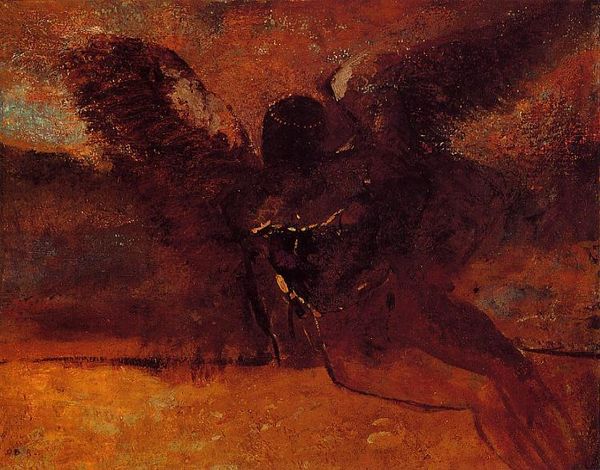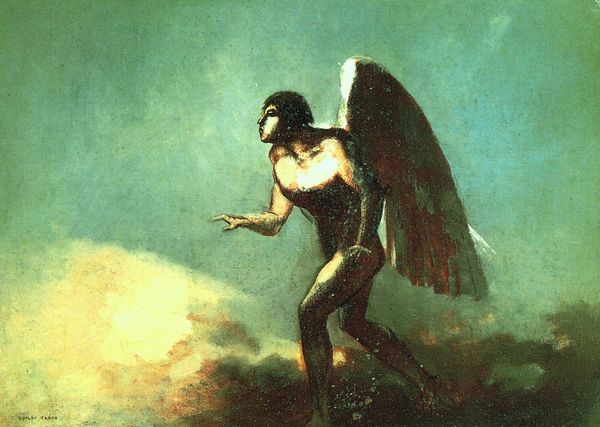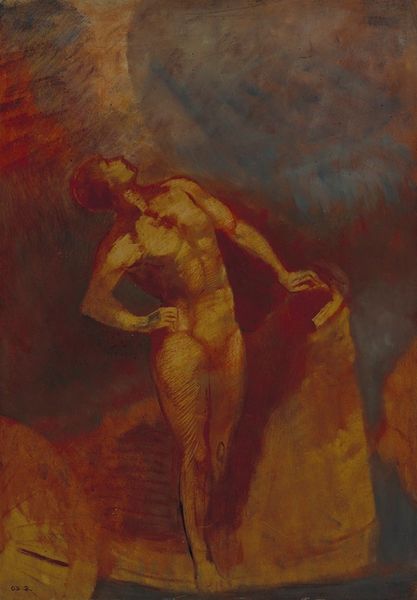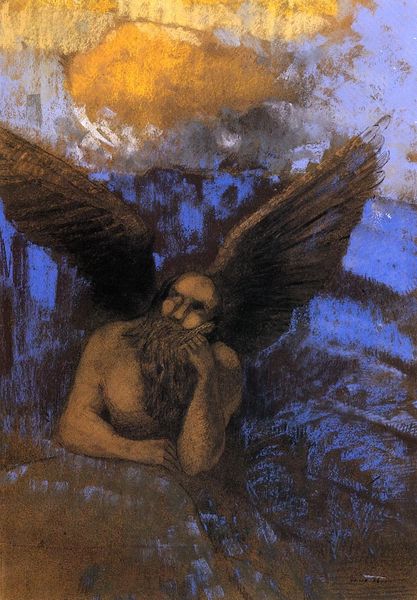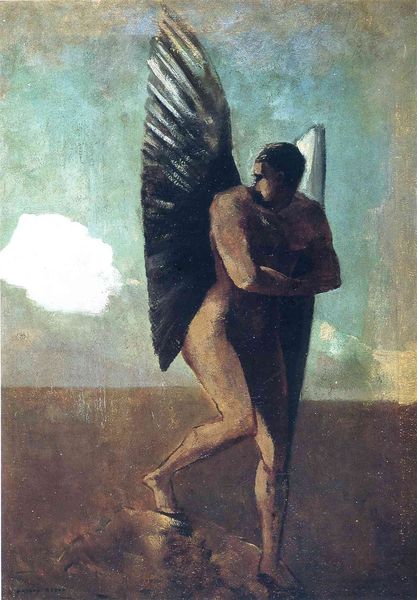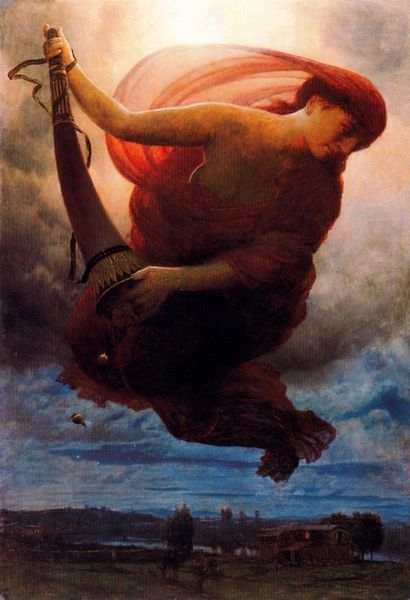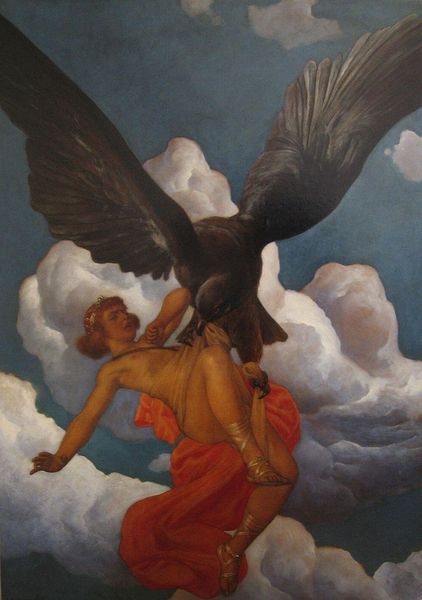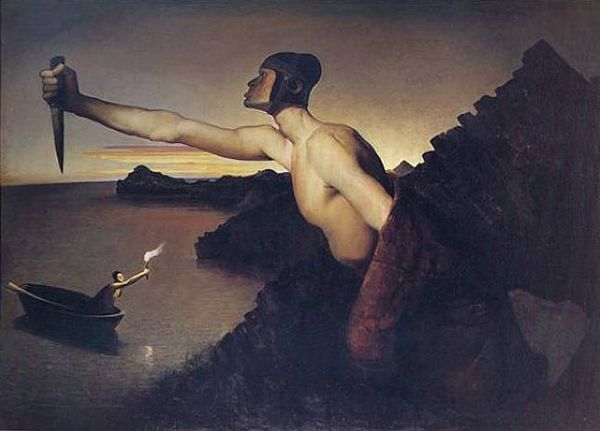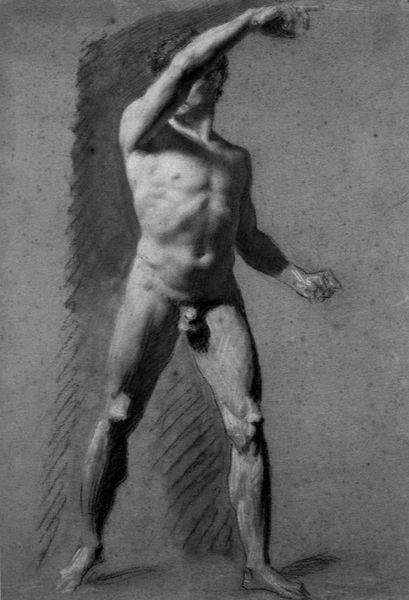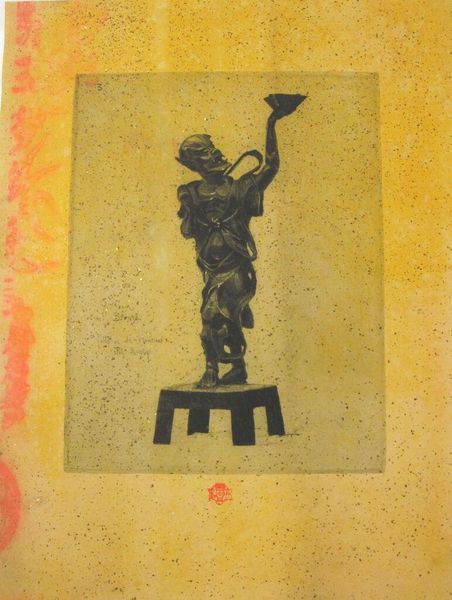
painting, oil-paint
#
painting
#
oil-paint
#
figuration
#
oil painting
#
roman-mythology
#
neo expressionist
#
mythology
#
human
#
symbolism
#
nude
Copyright: Public domain
Editor: Today, we're looking at "Icarus" by Odilon Redon. It's an oil painting depicting the tragic figure from Greek mythology. I’m immediately struck by the overwhelming use of red and orange hues, lending this sense of heat and… almost claustrophobia. What are your first impressions, particularly regarding Redon’s choice of color? Curator: The near-monochromatic palette indeed dictates our initial perception. Observe how Redon employs subtle tonal variations within that fiery spectrum. Note the composition, with Icarus centrally placed. His gesture, seemingly shielding his eyes, directs our gaze toward the radiant object he holds. Is it a setting sun or perhaps…a wound? Consider how that singular bright focal point interacts with the atmospheric quality of the whole. Editor: That's interesting! I hadn’t considered it a wound. Do you think this focus on a specific compositional structure mutes any other readings that one could have? Curator: On the contrary, the severe composition—the upward thrust of the figure countered by his implied fall, the play of light and shadow—functions as a visual armature. Upon it, viewers are free to project myriad interpretations. The strength is how all of these artistic components result in unity. Editor: So the effectiveness is dependent on its elements working together? I guess before this, I wouldn't have understood just *how* connected the artistic elements can be! Curator: Precisely. Understanding the interconnectedness is essential. Every formal element contributes to the artwork's overall impact and potential for nuanced readings. That interplay, ultimately, is where its power resides.
Comments
No comments
Be the first to comment and join the conversation on the ultimate creative platform.
